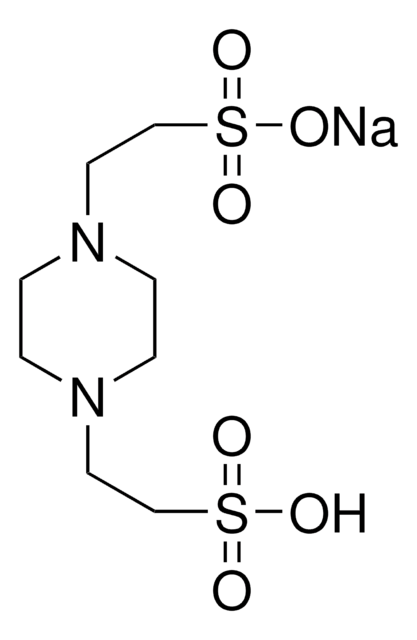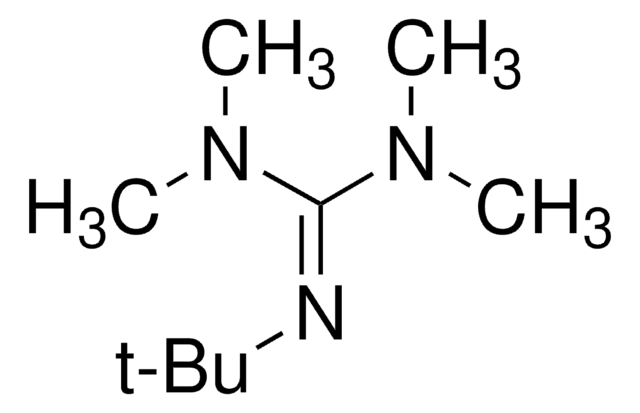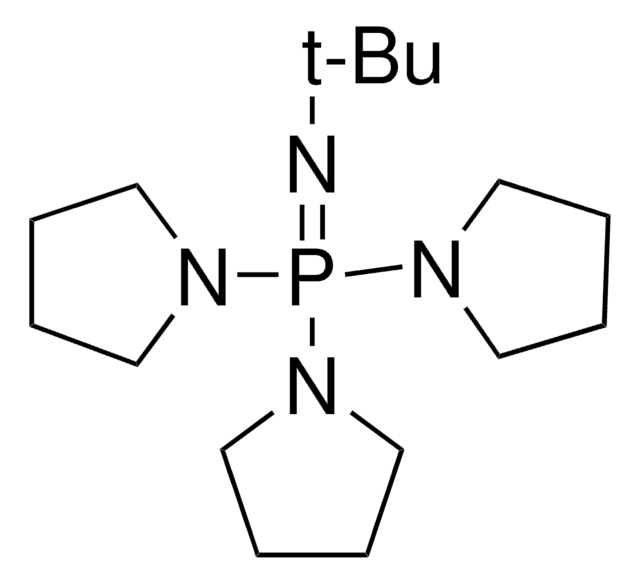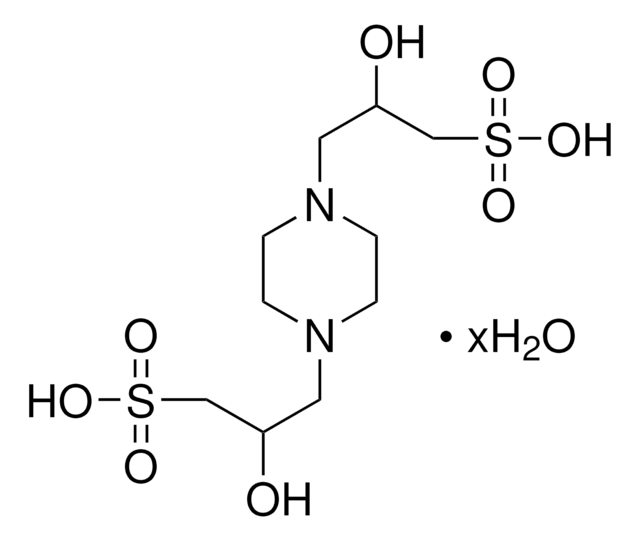80635
PIPES
BioXtra, for molecular biology, ≥99.5% (T)
Synonym(s):
1,4-Piperazinediethanesulfonic acid, Piperazine-1,4-bis(2-ethanesulfonic acid), Piperazine-N,N′-bis(2-ethanesulfonic acid)
About This Item
Recommended Products
grade
for molecular biology
Quality Level
product line
BioXtra
assay
≥99.5% (T)
form
powder
impurities
DNases, none detected
RNases, none detected
insoluble matter, passes filter test
phosphatases, none detected
proteases, none detected
ign. residue
≤0.2% (as SO4)
loss
≤0.2% loss on drying, 110 °C
useful pH range
6.1-7.5
pKa (25 °C)
6.8
mp
>300 °C (lit.)
solubility
0.1 M NaOH: 0.1 M at 20 °C, clear, colorless
anion traces
chloride (Cl-): ≤200 mg/kg
sulfate (SO42-): ≤50 mg/kg
cation traces
Al: ≤5 mg/kg
As: ≤0.1 mg/kg
Ba: ≤5 mg/kg
Bi: ≤5 mg/kg
Ca: ≤10 mg/kg
Cd: ≤5 mg/kg
Co: ≤5 mg/kg
Cr: ≤5 mg/kg
Cu: ≤5 mg/kg
Fe: ≤5 mg/kg
K: ≤50 mg/kg
Li: ≤5 mg/kg
Mg: ≤5 mg/kg
Mn: ≤5 mg/kg
Mo: ≤5 mg/kg
Na: ≤100 mg/kg
Ni: ≤5 mg/kg
Pb: ≤5 mg/kg
Sr: ≤5 mg/kg
Zn: ≤5 mg/kg
λ
0.1 M in 1 M NaOH
UV absorption
λ: 260 nm Amax: 0.055
λ: 280 nm Amax: 0.040
SMILES string
OS(=O)(=O)CCN1CCN(CC1)CCS(O)(=O)=O
InChI
1S/C8H18N2O6S2/c11-17(12,13)7-5-9-1-2-10(4-3-9)6-8-18(14,15)16/h1-8H2,(H,11,12,13)(H,14,15,16)
InChI key
IHPYMWDTONKSCO-UHFFFAOYSA-N
Looking for similar products? Visit Product Comparison Guide
Related Categories
Application
- Sensitive Detection of Immunoglobulin G Stability Using in Real-Time Isothermal Differential Scanning Fluorimetry: Determinants of Protein Stability for Antibody-Based Therapeutics.: The use of PIPES buffer in this study was integral to maintaining the stability of immunoglobulin G during differential scanning fluorimetry. This method is crucial for evaluating the stability of antibody-based therapeutics (Moggridge et al., 2017).
Other Notes
Storage Class
13 - Non Combustible Solids
wgk_germany
WGK 3
flash_point_f
Not applicable
flash_point_c
Not applicable
ppe
Eyeshields, Gloves, type N95 (US)
Certificates of Analysis (COA)
Search for Certificates of Analysis (COA) by entering the products Lot/Batch Number. Lot and Batch Numbers can be found on a product’s label following the words ‘Lot’ or ‘Batch’.
Already Own This Product?
Find documentation for the products that you have recently purchased in the Document Library.
Our team of scientists has experience in all areas of research including Life Science, Material Science, Chemical Synthesis, Chromatography, Analytical and many others.
Contact Technical Service





